
Pages:
<< Back 1
2 3
4 5
6 7
8
9 10 Next
>>
DePauw's
foreign study program expanded to include sending groups of students
under the supervision of a faculty member to various European cities
as part of a Junior Semester Abroad plan. Professor Bergmann of
the English department led the first
group to Zell am See near Salzburg, Austria, in 1959. This program
was later shifted to Vienna. In 1960 Professor Fuller of the zoology
department initiated a similar program in Freiburg, Germany. Later
Athens, Greece became the center for another program.
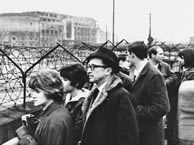 
Regular
summer sessions were discontinued in 1951. Instead DePauw began
offering special summer programs for high school students and for
both elementary and secondary school teachers. In 1956 the Coe Foundation
sponsored the first of a series of American Studies Institutes for
high school teachers. Similarly the National Science Foundation
funded a Science and Mathematics Institute for teachers of science
in the fifth, sixth, seventh, and eighth grades for several summers.
Other summer programs brought high school juniors and seniors to
campus for college preparatory work and career planning.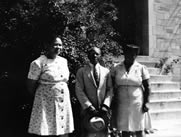
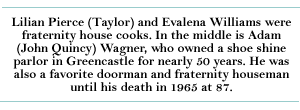
DePauw joined with other colleges and universities in the state
to advance their mutual interests. In 1953 the university became
a member of the Indiana Collegiate Conference, which included Butler,
Evansville, Valparaiso, St. Joseph's, Indiana State, and Ball State.
DePauw continued to compete with these institutions in athletic
contests for a number of years. It also had an active role in the
Associated Colleges of Indiana, which was primarily a fund-raising
group, as well as the lobbying association, the Independent Colleges
and Universities of Indiana.
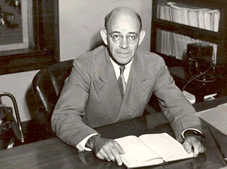 
In 1959 the university joined with 11 other liberal arts colleges
in Indiana, Ohio, and Michigan to form a broader type of organization
which became the Great Lakes Colleges Association. The GLCA, comprised
of Earlham, Wabash, Antioch, Denison, Kenyon, Oberlin, Ohio Wesleyan,
Wooster, Albion, Hope, Kalamazoo, and DePauw, adopted a constitution
in 1961 setting forth its objectives, which included holding conferences
on educational matters and undertaking cooperative programs in teaching,
research, college administration, and student activities.
Modest improvements were made in faculty compensation during this
administration. The average salary for full professors rose from
$5,279 in 1951-52 to $9,700 in 1961-62. Fringe benefits were increased
to include major medical insurance and minor changes in the faculty
pension system administered by the Teachers Insurance and Annuity
Association. A generally inflationary period also brought higher
charges to students. By 1961-62 tuition had reached $1,150, approximately
double the amount charged 10 years before.
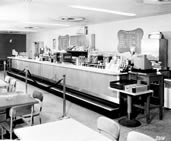
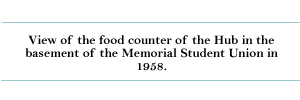
A large number of new instructors joined the faculty as student
enrollments grew during the period. Among them were Raymond E. Mizer,
Edward K. Williams, Conrad A. Hilberry, Marian Shalkhauser (Brock),
Norman Carlson, Clem C. Williams, Roger L. Cox and Fred N. Nelson
in English; Robert O: Weiss, James F. Elrod, John R. Foxen, and
Darrell H. Gooch in speech; Marjorie Lane (Baerg), Carl E. Steinhauser,
and Glenn E. Welliver in German; Morris Wachs, C. Hal Albro, and
William J. Driscoll in Romance languages; and Edwin L. Minar and
Brandt N. Steele in classical languages.
Others were John J. Baughman, Clifton J. Phillips, Dwight L. Ling,
John B. Wilson, James F. Findlay, and Norman K. Risjord in history;Stephen
T. Early, William L. Morrow, and Robert S. Sullivant in political
science; W. Russell McIntyre and John T. Reiling in sociology; Russell
J. Compton, Robert S. Eccles, H. John Eigenbrodt, Robert D. Newton,
Leon Pacala, Roger Gustavsson, William E. Farley, and Elmer D. Klemke
in philosophy and religion; Joseph P. Allen and Fred S. Silander
in economics; and Charles K. Moore, Muriel Holland, Donald E. Orlosky,
and Florence Guild in education.
Also joining the faculty were Frank S. McKenna, Barron B. Scarborough,
Charles E. Platt, Curtis E. Thomsen, Felix E. Goodson, John E. Exner,
Jr., Rex Rector, and Philip C. Diem in psychology; Clinton B. Gass,
Charles H. Johnson, Robert J. Thomas, and John C. Anderson in mathematics
and astronomy; Malcolm Correll, Hugh F. Henry, and Paul B. Kissinger
in physics; John A. Ricketts and John W. McFarland in chemistry;
Robert I. Fletcher and W. Preston Adams in botany and bacteriology;
James A. Madison in geology; James R. Gammon in zoology; Robert
R. Harvey, James C. Loveless, Elmer McCall, Theodore Katula, and
Thomas Mont in physical education; Garret J. Boone and Richard Peeler
in art; Betty J. Staggs in home economics; and Anna J. Evans and
Marion B. Crandall in secretarial science.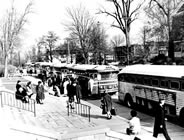
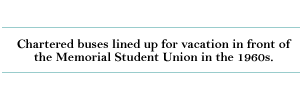
The School of Music added Daniel H. Hanna, Floyd H. Peterson, and
Milton S. Trusler. Among the first instructors in the School of
Nursing were Jessalyn M. Allen, Wanda Plunkett (Craddock), Carmen
Sharp, Virginia Kremer, and Patricia A. Ritter. In 1954 John C.
Wright began his long service as assistant director of the Bureau
of Testing and Research, which was headed during this period first
by Professor Scarborough and then by Professor Exner of the psychology
department. New members of the library staff included Elizabeth
Bowden (Baughman), J. Marian Mullendore, Suzanne Johnson (Early),
Eleanor Cammack, Russell S. Dozer, and Eleanor J. Carmichael.
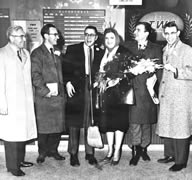 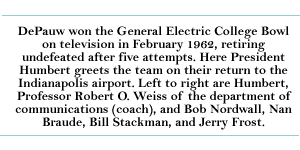
In
January 1962 Founders' and Benefactors' Day was celebrated with
special ceremonies marking the 125th anniversary of the founding
of DePauw University. Later that year Professor George Manhart published
his monumental two-volume historical work, DePauw Through the Years.
Adding an unexpected fillip to the celebrations was the series of
five victories in a row won by DePauw students in the General Electric-sponsored
College Bowl television quiz show. When the four DePauw representatives
returned to campus undefeated after the final contest, hundreds
of students and others came out in the rain to greet them in a gesture
harking back to similar receptions given to the victors in oratorical
and debating competition of an earlier era.
The sudden death of President Humbert in June 1962 cast a pall over
the Commencement exercises and caused a hiatus in university leadership.
His death came at the height of his career at the age of 56 and
in the midst of a major fund-raising campaign. His widow, Margaret
Lundy Humbert, continued to reside in Greencastle for some years
and later married Professor Emeritus Jerome
Hixson, with whom she now makes her home in Florida.
There followed a year's interlude during which Glenn W. Thompson,
president of the board of trustees, was named chief executive of
the university while Dean Farber acted as chief administrative officer.
Among those appointed to the faculty during this period were Richard
Kelly in psychology, who also became the director of the Bureau
of Testing and Research; William J. Petrek in philosophy and religion;
Ruth L. Lester in physical education; James A. Martindale and Daniel
L. Smith in the library; Ned B. MacPhail in education; Zita D. Dabars
in Russian; Eugene P. Schwartz in chemistry; and Edward M. Dolan,
an anthropologist who began teaching that subject in the sociology
department.
Back
to Top
Pages:
<< Back 1
2 3
4 5
6 7
8
9 10 Next
>>
|












